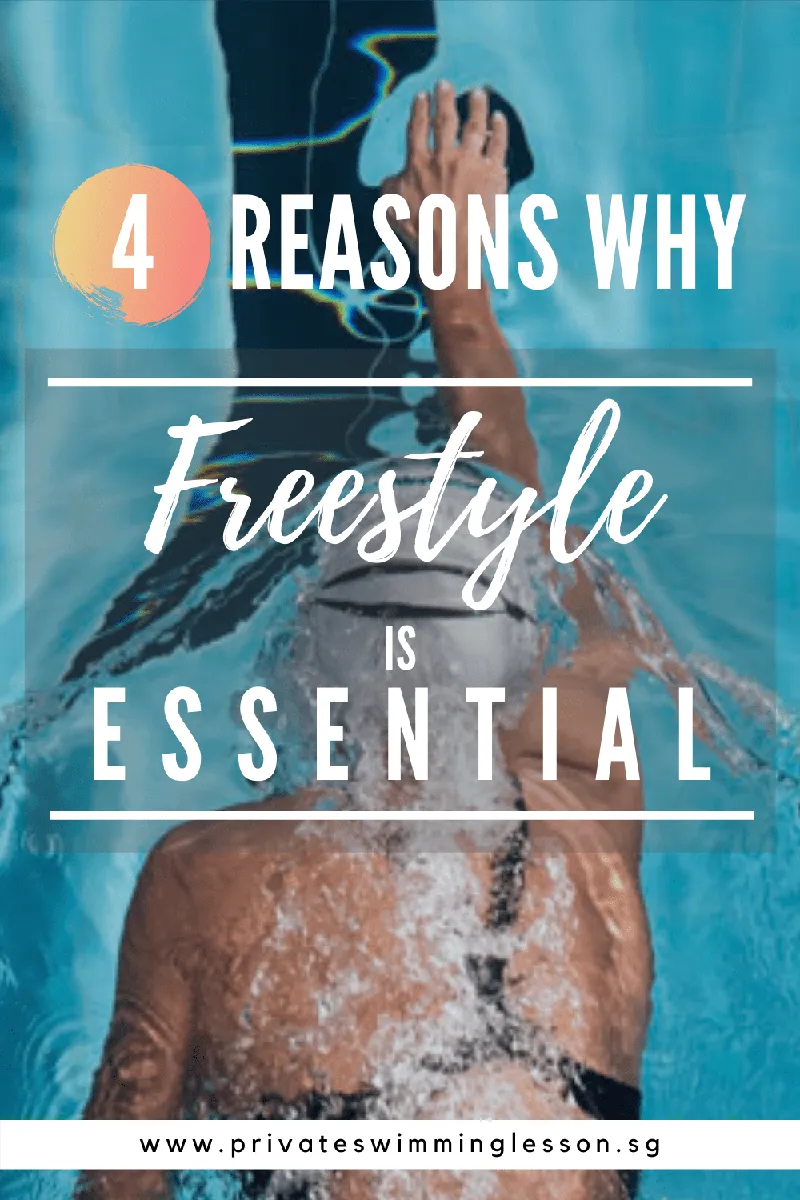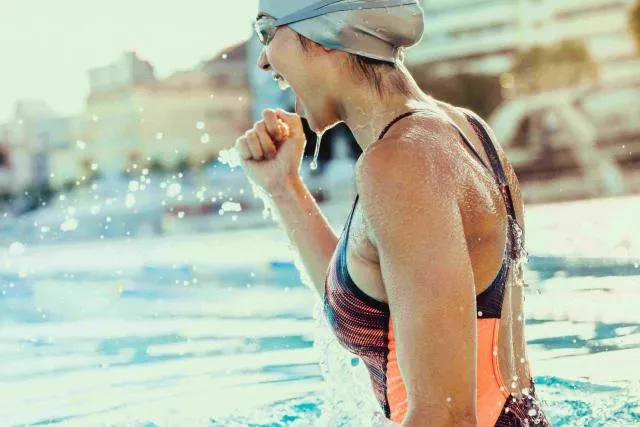Save It on Pinterest
Fastest and Most Efficient
Did you know that the term “freestyle” is not a swimming stroke but a category in swimming competitions? It is a category where the swimmers are free to choose the stroke they desire? The freestyle stroke, that we are familiar with, is actually called the front crawl. Then why is the term “freestyle” used interchangeably with “front crawl”?
This is because front crawl is the fastest and most efficient stroke out of the 4 competitive strokes in swimming. It brings you further with the same amount of energy than other strokes.
Therefore, most swimmers, if not all, would choose to swim the front crawl in freestyle races that made the two terms metonymy of each other. But then, have you ever wondered what makes a front crawl so fast?
The freestyle is performed with a streamlined body position which allows swimmers to swim with the least water resistance and drag possible.
In addition, it involves continuous alternating arm action and the simultaneous kicking causes a continuous propulsive force forward. This makes it faster than other strokes, such as butterfly stroke, which has a slight pause of propulsion when both arms are recovering back over the water.
Burns Calories
Although butterfly stroke is the one at the top of the calorie burner list, freestyle stroke is a close second. If you are familiar with the butterfly stroke, it is extremely difficult to perform and not for new swimmers. As such, freestyle stroke might be a good alternative for you to burn those extra calories within the shortest amount of time.
Freestyle stroke burns an average of 300 calories per 30 minutes. This is as many calories burnt as running 10.5km/h on a treadmill for the same amount of time.
Then you might ask, why swim when you can run?
This is because swimming is generally better for joint health as compared to running because it is a low impact exercise. You have zero contact with anything other than water, apart from the wall turn. Therefore, freestyle might be a good option if you want an efficient calorie burner but face difficulties in performing the butterfly stroke.
Trust me, a few laps of the freestyle stroke will definitely get you out of breath!
Tones Back Muscles
When we mention a swimmer’s body, I am sure it is not difficult to recall the image of a perfectly v-shaped and toned back with zero sign of back fat in sight.
Generally, swimming is indeed a full body workout but if you are looking for one stroke that has the greatest impact on toning back muscles, freestyle stroke is the stroke for you!
As your arms reach forward and prepare for the pulling and pushing portion during the front crawl, your shoulder blades will rotate upward and this rotation requires your back muscles to perform.
Reaching as far forward as possible helps you catch the water at the front of the stroke, which allows you to move further with each stroke. All these aids in increasing the efficiency of the stroke. As such, by learning proper techniques and practicing this stroke often, it will be able to strengthen and tone your back muscles.
Improves Coordination and Breathing Techniques
If you think picking up freestyle is as easy as the breaststroke, you are so wrong. The timing and coordination of arms and legs for freestyle is unlike breaststroke, which might come more naturally to some people.
The front crawl is a continuous and alternating stroke, which means when one arm pulls down and back towards the hip, the other recovers over the water.
This also applies to the legs, as one leg kicks down, the other moves up. All these actions should be done smoothly and continuously.
This coordination can also be affected by your breathing techniques. There are many types of breathing techniques that you can choose from in front crawl but the most common and preferred one is trickle breathing. For trickle breathing, take a deep breath in through your mouth as you turn your head to the side and hold your breath as your head returns into the water. Allow air to trickle out of your nose slowly, followed by the remaining air out of your mouth.
The coordination and breathing techniques learnt from this stroke could be applied to other swimming strokes or even be useful when performing other activities, such as other types of sports.
Conclusion
Freestyle and Breaststroke are the most common strokes you see at a local swimming pool. The mandatory Swimsafer test in Singapore also heavily emphasises on both of these strokes. Do check out our other article of "5 Health Benefits Of Breaststroke" for more insights on these two popular strokes!
For enquiry about Private Swimming Lesson for Adults in Singapore, talk to us and find out more!
Swim With Us
Hi all! I am an avid traveller, baker and avid childhood education writer. Being able to share my experience through words has always been a passion of mine. Through my writing, I hope you will gain more knowledge of the swimming world and share my passion for swimming too!



